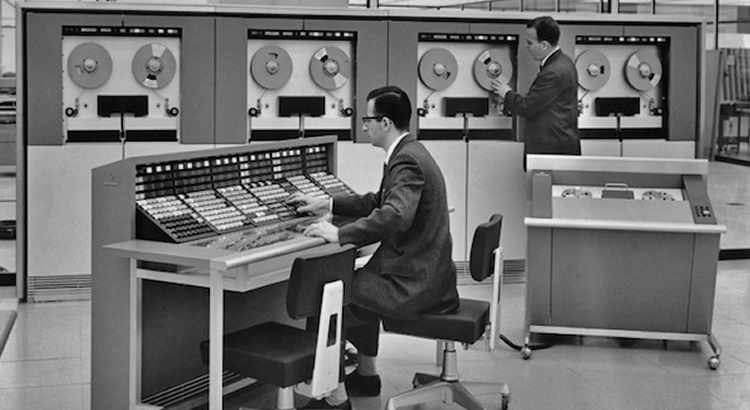iPad Pro will be the only Mac you ever need

It’s worth remarking that the power of the smartphone you have in your pocket today is likely greater than what we used to have room-sized mainframes to deliver.
Fresh from the highly speculative department, here are five details about ARM’s chip roadmap that could enable Apple to introduce new breeds of ARM-powered Mac/iPad/hybrid devices.
“The smartphone is the world’s most ubiquitous compute device, offering experiences that improve with each new product generation,” said Pete Hutton, executive vice president and president, product groups, ARM. “In 2017, we will see devices with the Cortex-A73 and Mali-G71 processors that stand out thanks to their impressive and sustained performance, and even more stunning visuals. This technology can make engaging with 4K video, virtual reality and augmented reality an everyday experience on a mobile device.”
What it is
Now, we know Apple uses ARM chip reference designs in the creation of the powerful mobile A-series chips that power all its iOS devices. That’s why the fact that ARM recently announced some of the details concerning its Cortex-A73 reference design is such a big deal.
- The Cortex-A73 is faster than the Nvidia GeForce GTX 740M used in some laptops in 2013.
- TSMC has already announced a 10nm, quad-core build of this design.
- Processors using this design should deliver double the performance of a 20nm 1.9GHz A57 ARM design that powered the 64-bit 2014 iPhone.
- They will also deliver 1.3 times the performance of the 16nm 2.5GHz A72 reference design that powers the current Apple A-series iOS chips.
- The chips use less power, more efficiently for better battery life. They’re also much smaller enabling smaller devices and use in smaller form factors.
- ARM claims a 10nm mobile application processor with the Mali-G71 will deliver better graphics performance than a mid-range laptop with a discrete graphics.
What difference might this make?
Put this together and what have we got? Put simply, we are reaching ever closer to true desktop performance in a mobile device; at 64-bit, with low power demands etc.
Add in a little of Apple’s processor design expertise dosed with the company’s tight integration between software and hardware, and you’re looking at a point at which mobile devices match performance of most computers, potentially enabling Apple to begin a whole new transition.
There’s a lot of talk that VR may be part of the plan. This makes sense, of course. However, where is VR useful? For all the hype, VR is really mostly useful for professional applications (medicine, transport and energy management, law enforcement) and virtual experiences, such as online shopping and gaming.
In future I can see a potential use for VR in terms of accessing virtualized desktop computing experiences through mobile devices (imagine a gesture controlled Mac available as an iOS app through VR headsets), but we haven’t reached that point yet.
However, be in no doubt that where these processors will really change the game is the iPad Pro, future iterations of which will become capable of increasingly complex computing tasks currently handled by traditional desktop and notebook computers. In other words, iPad Pro will be the only Mac you ever need.





Where this devices fall short is not necessarily in the hardware. Mobile OSes are very limited. Storage is very limited. Cloud storage is only really viable though wifi as most data plans are expensive and small compared to the data needs of your average user. No external input/output. No usb or other ways of adding things like external hardware storage, printers etc. these devices have a long way to go before they could possibly be “the only Mac you will ever need”
Storage is unlimited. Bandwidth is limited. That’s changing though — 5G, embedded SIMs and more. One day you’ll get a Data only family plan for connected devices — we will have to as those IoT devices will all demand bandwidth — which means the way people charge for access will also change.
As per the I/O problems you mention — I already have a printer connected to my iPad using an app; I already have an external storage device connected using an app, and we know that Lightning to USB devices are coming to market. I do appreciate these technical hurdles you mention — but they are only challenges — they can be solved. And they will be, particularly as the list of things that these devices are capable of doing grows. It’s just an inevitable thing.
I’m not saying you won’t need a Mac for some things of course, I’ve never claimed that — but the tasks that can only be transacted using a Mac will continue to shrink, bar at the top end where they may grow … but, for example, I can easily imagine iPads calling on the services of cloud-hosted virtual Macs for some tasks, using versions of things like Parallels.
I truly believe that the future of computing is visible in computers you cannot see.
No, I need the biggest, baddest Mac that Apple will build. And one that is expandable. Otherwise, there will be no more Macs in my home. Only PCs that run macOS. I would much rather buy Apple though.
expandable, you say? So when did you get one of those.
Keep buying them apples.